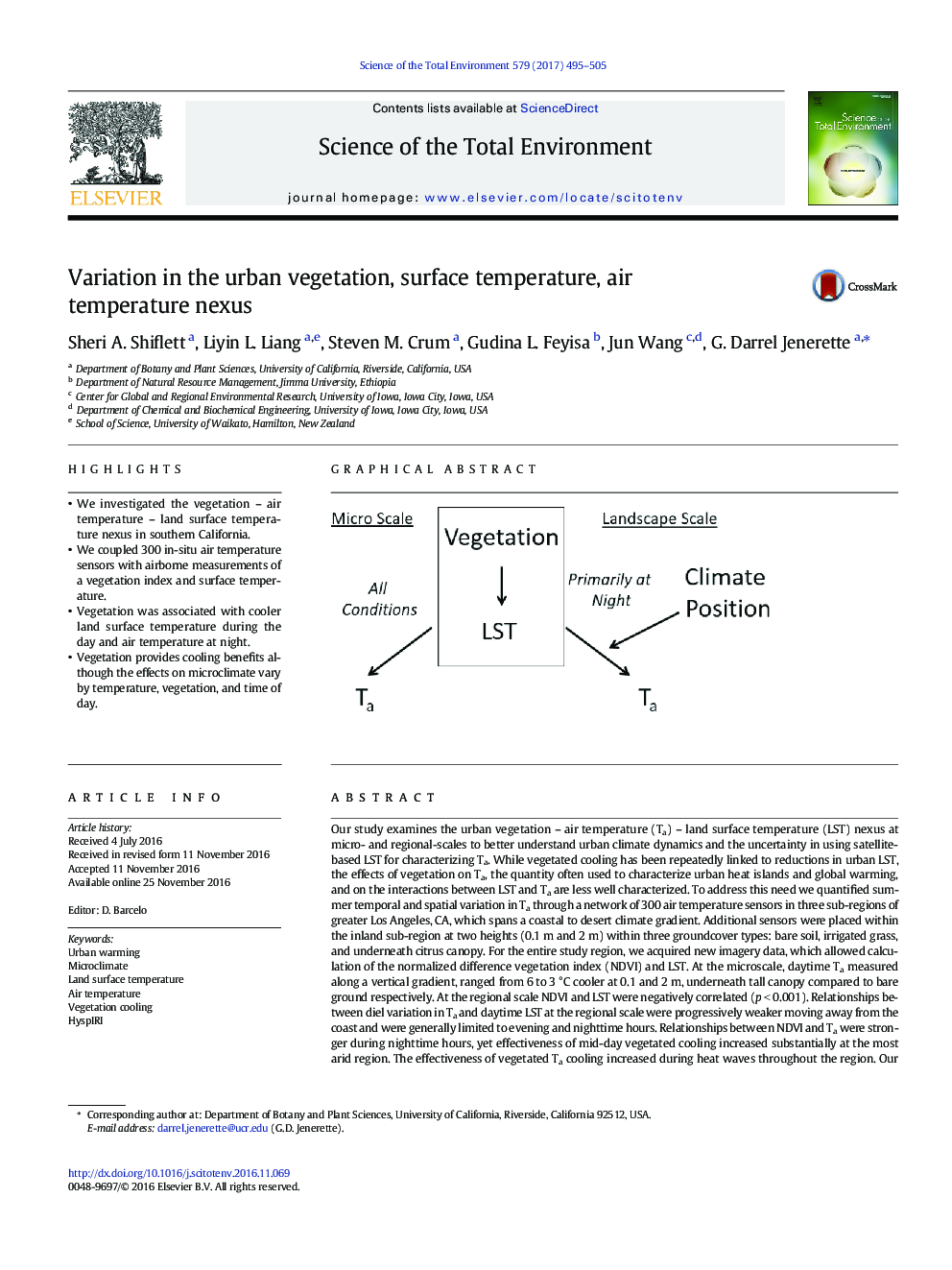| کد مقاله | کد نشریه | سال انتشار | مقاله انگلیسی | نسخه تمام متن |
|---|---|---|---|---|
| 5751402 | 1619712 | 2017 | 11 صفحه PDF | دانلود رایگان |
- We investigated the vegetation - air temperature - land surface temperature nexus in southern California.
- We coupled 300 in-situ air temperature sensors with airborne measurements of a vegetation index and surface temperature.
- Vegetation was associated with cooler land surface temperature during the day and air temperature at night.
- Vegetation provides cooling benefits although the effects on microclimate vary by temperature, vegetation, and time of day.
Our study examines the urban vegetation - air temperature (Ta) - land surface temperature (LST) nexus at micro- and regional-scales to better understand urban climate dynamics and the uncertainty in using satellite-based LST for characterizing Ta. While vegetated cooling has been repeatedly linked to reductions in urban LST, the effects of vegetation on Ta, the quantity often used to characterize urban heat islands and global warming, and on the interactions between LST and Ta are less well characterized. To address this need we quantified summer temporal and spatial variation in Ta through a network of 300 air temperature sensors in three sub-regions of greater Los Angeles, CA, which spans a coastal to desert climate gradient. Additional sensors were placed within the inland sub-region at two heights (0.1 m and 2 m) within three groundcover types: bare soil, irrigated grass, and underneath citrus canopy. For the entire study region, we acquired new imagery data, which allowed calculation of the normalized difference vegetation index (NDVI) and LST. At the microscale, daytime Ta measured along a vertical gradient, ranged from 6 to 3 °C cooler at 0.1 and 2 m, underneath tall canopy compared to bare ground respectively. At the regional scale NDVI and LST were negatively correlated (p < 0.001). Relationships between diel variation in Ta and daytime LST at the regional scale were progressively weaker moving away from the coast and were generally limited to evening and nighttime hours. Relationships between NDVI and Ta were stronger during nighttime hours, yet effectiveness of mid-day vegetated cooling increased substantially at the most arid region. The effectiveness of vegetated Ta cooling increased during heat waves throughout the region. Our findings suggest an important but complex role of vegetation on LST and Ta and that vegetation may provide a negative feedback to urban climate warming.
120
Journal: Science of The Total Environment - Volume 579, 1 February 2017, Pages 495-505
